So you’ve heard you should be giving your students different types of story problems in math but you are not sure which ones. Or, when you have assigned story problems, your students sometimes solve them with ease and other times it feels like you are pulling teeth? Am I right? The issue could be that there are different types of story problems in math and they vary in terms of difficulty. Do you know how to tell them apart?
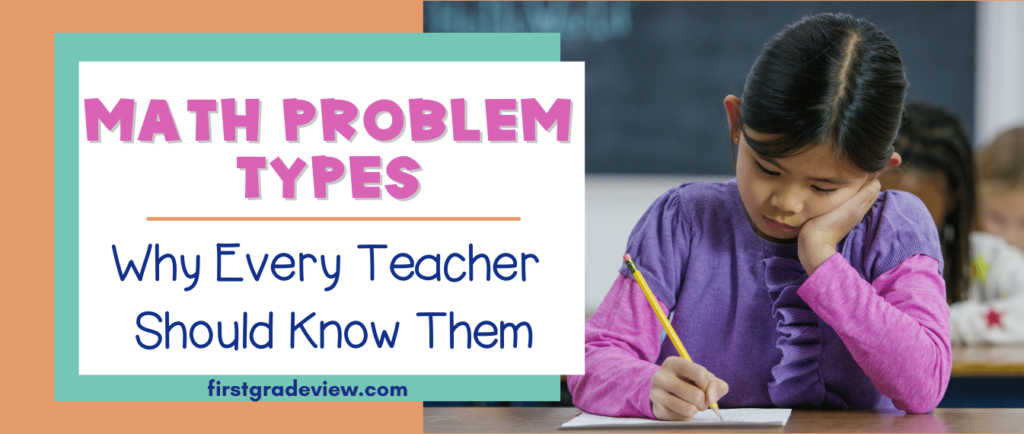
Solving Story Problems
So now you know that all story problems are not the same. What should you do next? As a teacher, it is very important that you can identify which type of math story problem you are giving to your students. This will help you know what misconceptions or difficulties students may face with the various problem types.
Types of Story Problems in Math
In the K-2 classroom, it is important that students work on math story problems regularly. You can achieve this in a problem of the day, problems of the week routine, or through your district’s adopted math curriculum. No matter which routine you choose, recognizing the types of story problems in math is vital for selecting problems for instruction.
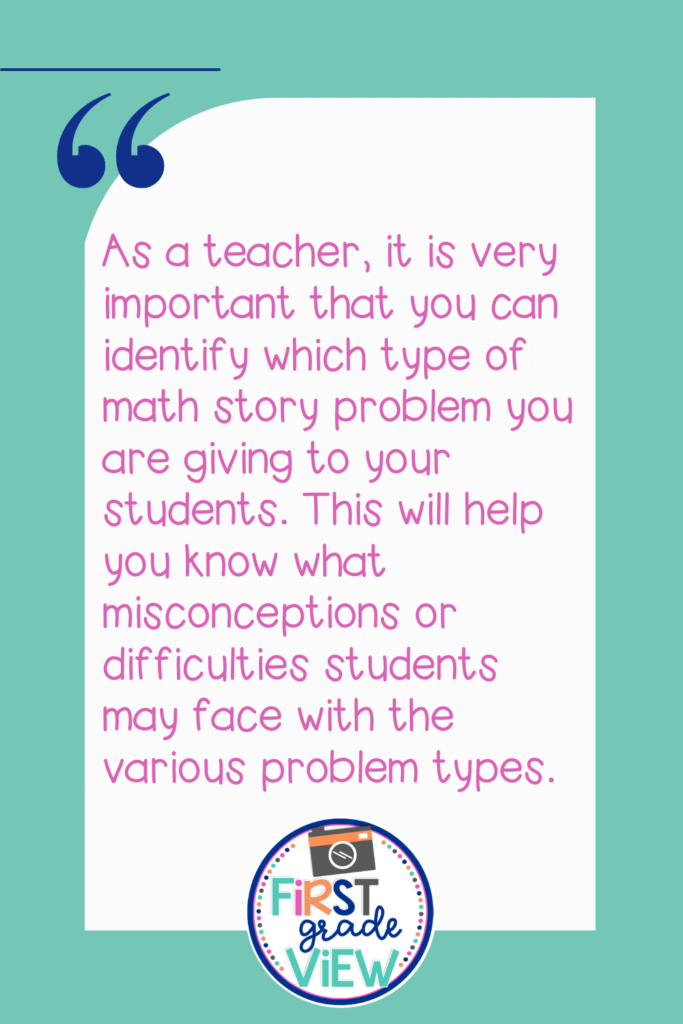
Math story problems are classified as joining (addition), separating (subtraction), part/part/whole (add to/take from), or compare. Although there are also multiplication and division problem types, this post will only be covering the story problems involving addition and subtraction.
Join Problems
In joining problems, students work on solving addition. These problems involve a direct action or implied action. When there is a direct action, these problems are the easiest problem type for students to solve. Students are able to model or act out problems with action. The join problems below are in order of easiest to most difficult to solve.
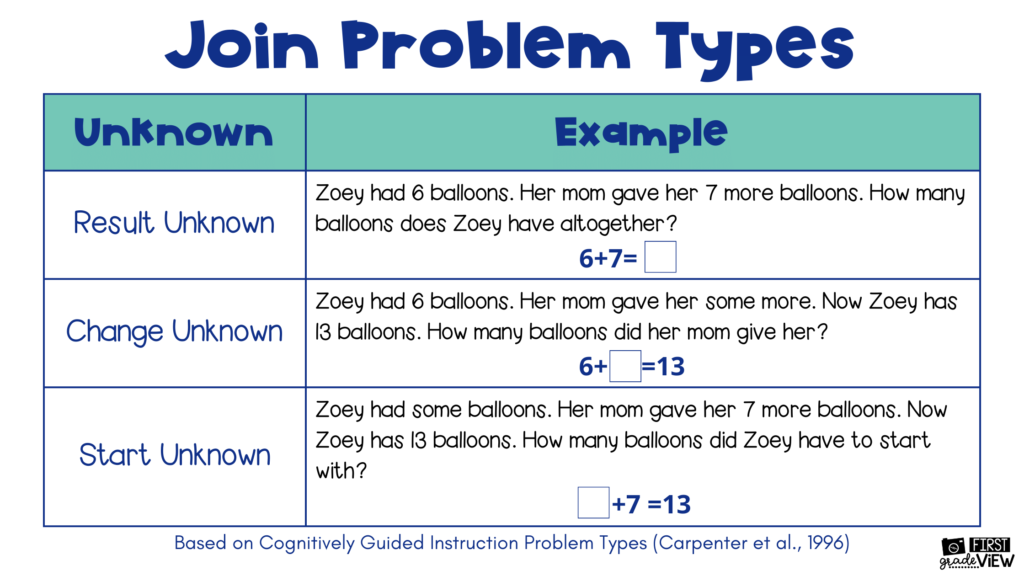
Separate Problems
In separate problems, students work on solving subtraction. Subtraction can be thought of as taking from or taking apart. These problems also involve a direct action or implied action. As with addition, when there is a direct action, these problems are the easiest problem type for students to solve. The separate problems below are in order of easiest to most difficult to solve.

Part/Part/Whole Problems
In part/part/whole problems, there is no direct or implied action taking place. Instead, students are know both parts and must find the whole. This is the easiest version for students to solve. They may also be know the whole and the size of one part and must solve for the size of the other part. Lastly, students may only know the whole and solve for parts that could work. In this type of example, there is more than one answer.
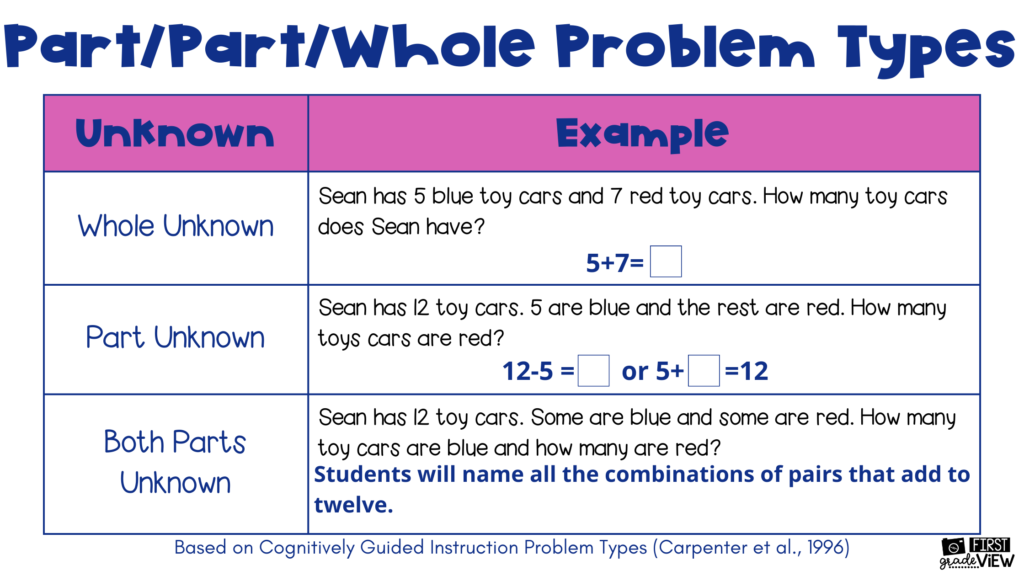
Compare Problems
In compare problems, there is also no direct or implied action taking place. Instead, students are two sets of numbers and must compare how much more or how much fewer one is over the other. These problem types are usually the toughest for students to solve. The compare problems below are in order according to their degree of difficulty.
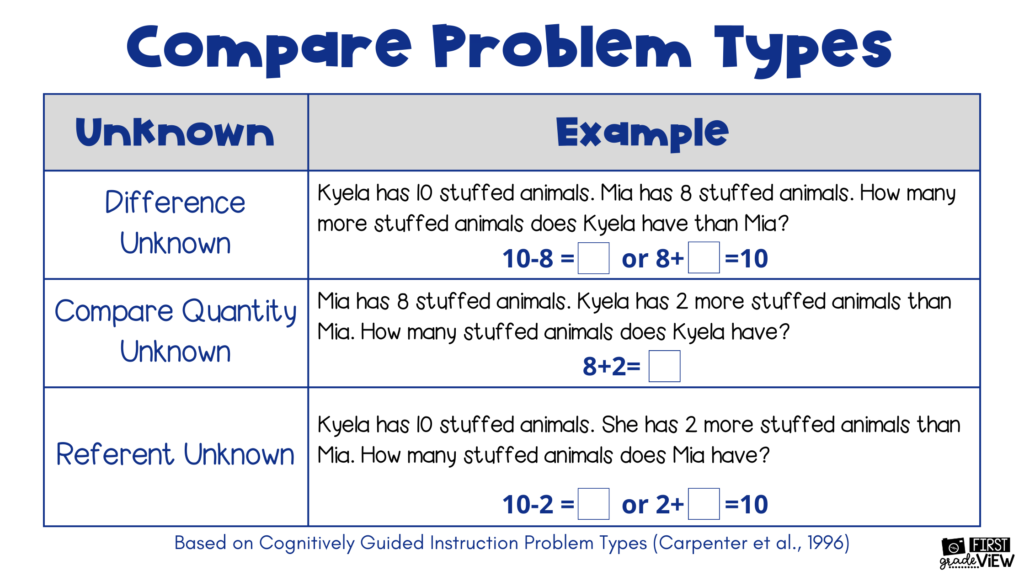
What Type of Story Problems in Math Should You Teach?
Now that you know that not all story problems are created equally, you may be wondering which kind should I be teaching to my students? It helps to know the math standards and frameworks for your state. According to the Common Core State Standards, the following problem types should be taught in grades K-2.

It’s nice to know the trajectory of problem types students are expected to master at each grade level. This will allow you to spend more time on those math stories while recognizing the importance of exposing your students to the different types of story problems. Remember that it is not important that your students can identify or name each problem type. Instead, you want students to spend their time making sense of the problem. As the teacher, knowing the problem types for yourself will help you select story problems for instruction.
Do you agree that knowing the the different problem types is important for instruction? Share why (or why not!) in the comments!
You may also like:
Why You shouldn’t Teach Math Problem Types to Your Students
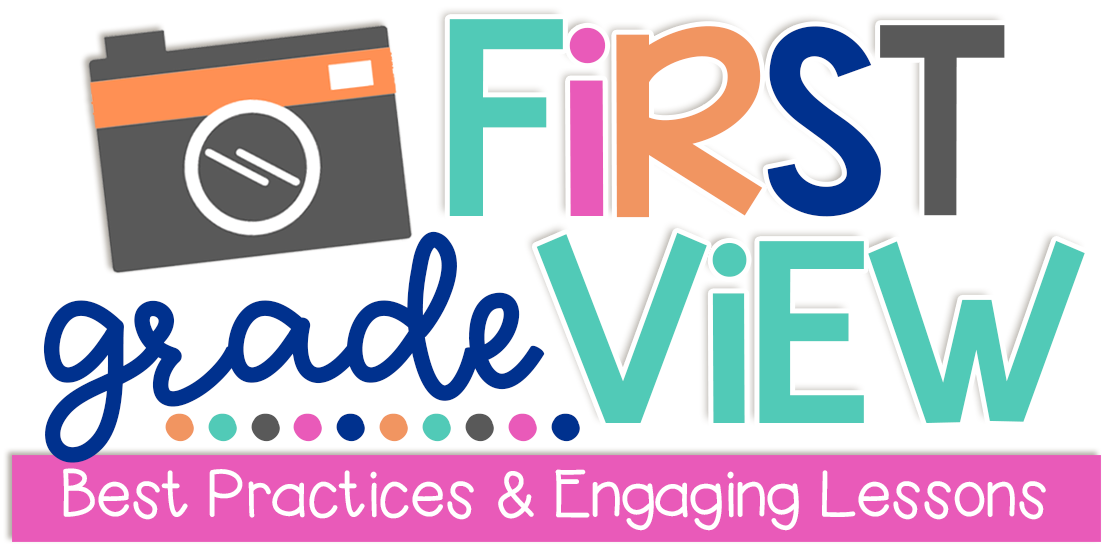




No Comments